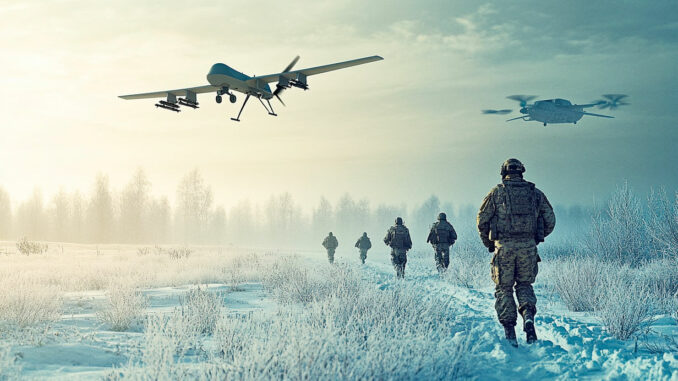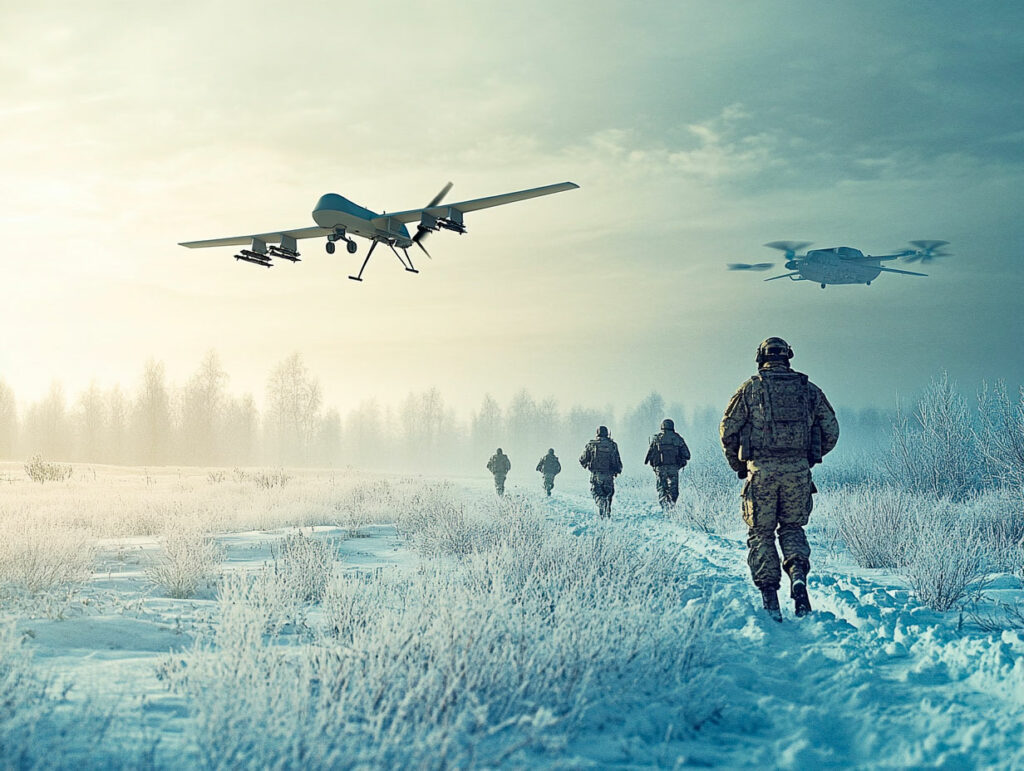
Ukrainian long-range drones are disrupting Russian strategy and revolutionizing the battlefield with technical and economic advances.
Over the past two years, Ukrainian drone attacks on Russian targets have multiplied, reaching regions such as Murmansk, over 2,000 km from Ukraine. The use of the Palianytsia drone, developed by Ukraine, illustrates the country’s ability to innovate and produce long-range drones. Costing just 100,000 euros, this drone offers effective strategic solutions at a lower cost than conventional missiles.
Palianytsia drone features
The Palianytsia drone is a jet-powered aircraft capable of flying up to 700 km at a speed of 500 km/h. It can carry a payload of 40 kg, enough to inflict significant damage on military targets. Its 72-minute range enables it to reach distant targets while flying at low altitude to avoid radar detection.
This drone was designed and produced in 18 months, demonstrating Ukraine’s ability to respond rapidly to military needs in wartime. Unlike the sophisticated weapons of established powers, Palianytsia does not use rare components, making it easy to mass-produce.
Consequences of drone attacks on Murmansk
The impact of attacks on distant targets like Murmansk highlights a turning point in modern warfare. Russian naval and air bases, previously considered out of reach, are now vulnerable. The idea of Ukraine having the capability to strike so far away has raised major strategic concerns in Russia, calling into question the security of key military infrastructures.
Drones are less expensive than missiles, valued at over 10 million euros each, and offer excellent cost-effectiveness. Although their payloads are lighter, their numbers and ability to target precisely compensate for this limitation. In response, Russia has stepped up its countermeasures, but these have not been enough to completely stem the Ukrainian attacks.

drone warfare: a technological turning point
The massive use of drones in Ukraine has redefined the way modern conflicts are fought. In addition to long-range drones like Palianytsia, both sides are using low-cost drones and armed quadricopters. These devices, which can cost a few hundred euros, are controlled by remote operators using FPV goggles and carry explosive charges weighing around 0.5 kg. These drones are now the main cause of casualties in Ukraine, a role previously assigned to artillery in the 20th century.
Operator training is crucial to maximize the effectiveness of these drones. An operator must undergo over 100 hours of training before becoming competent, and at least another 100 hours to optimize their use. This represents a significant human investment, but one that is necessary to maintain an edge on the battlefield.
Innovation and local production
One of Ukraine’s major assets is its ability to encourage local innovation. Many drones and modifications are the work of passionate civilians who adapt commercial models or design new prototypes. This responsiveness enables Ukraine to respond quickly to enemy strategies, unlike Russia, where bureaucracy and corruption slow down innovation. In 2024, Ukraine formalized the creation of an Unmanned Systems Force, a military branch specifically dedicated to the management and development of aerial and naval drones.
Technological innovations are not limited to offensive drones. Electronic countermeasures, such as jamming control signals, remain a strategy used by both sides. However, Ukraine has succeeded in developing drones capable of locating jamming signals and neutralizing jammers.
Economic and strategic implications
The drone war in Ukraine has redefined the global military landscape. The multi-billion euro market for military drones is booming. This trend could influence other nations to adopt strategies based on less expensive but effective drones. For the Ukraine, the effective use of drones and technological support from NATO are strengthening its ability to resist numerically superior forces.
Russia, although equipped with drones and countermeasures, suffers from the effects of corruption and economic sanctions. These factors limit its ability to produce and innovate as rapidly as Ukraine. The conflict has shown that the ability to innovate and react quickly is just as crucial as numerical superiority on the battlefield.
War Wings Daily is an independant magazine.